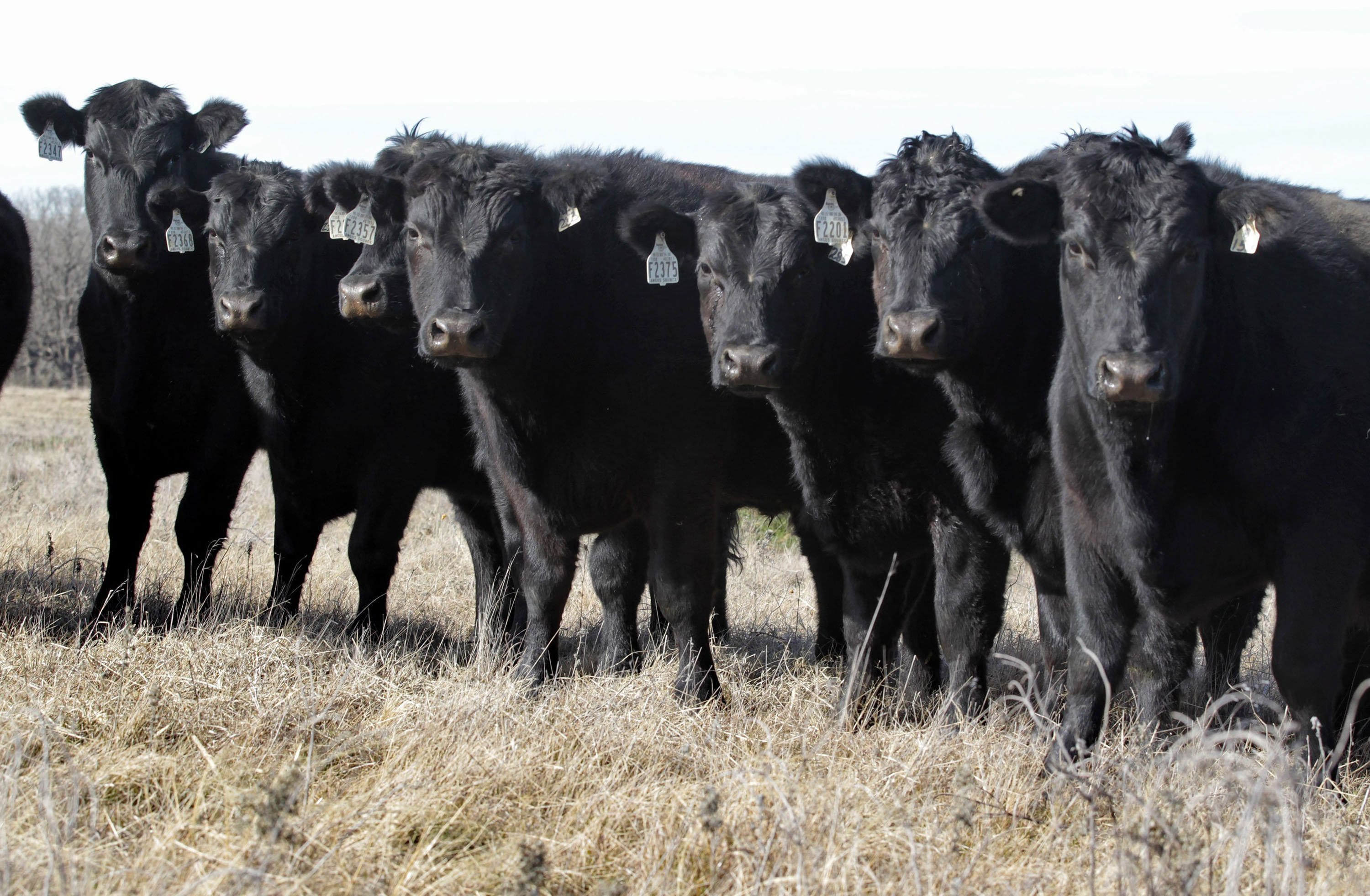GRANDVIEW, Texas — Jon Taggart squinted toward a dozen or so steers, all uniformly black-hided and docile, as they moseyed through a gate to an adjoining pasture of foot-high grass, unlike neighboring fields that almost looked as if the land had been scraped bare.
Forage is key to producing grass-fed beef, and it became an extremely limiting factor in drought-stricken Texas just as demand for the niche cuts may never have been higher. But Taggart has been at it since 1999, back when few consumers realized non-grain-finished steaks were available, and he knows how to maintain his ranch land in dry weather.
Whole Foods became an early purveyor of grass-fed beef starting eight years ago, followed by Central Market four years later. Kroger convinced College Station, Texas-based Nolan Ryan All-Natural Beef to join the pricey specialty market, while trying to further stoke demand by sourcing its own Simple Truth organic line with grass-fed beef from Uruguay. Nolan Ryan’s namesake operation, by necessity, has had to source its meat from Iowa and Nebraska.
Consumer demand is strong but neither the American Grassfed Association nor Texas cattle experts can quantify sales since they are so fragmented, with many small and medium-sized producers selling directly to the public at farmers markets.
“It’s growing but it’s still very small,” said Kevin Good, an analyst with Cattlefax, which monitors the industry. “Is it going from 1/2 percent to 1 percent? We don’t know.”
Ron Gill, a livestock specialist with the Texas A&M AgriLife Extension Service, sees expansion but like others can’t quantify it. “The size of its production puts it in a niche category, but there should be increasing demand as long as they can maintain quality,” Gill predicted.
Grass-fed beef is marketed as healthier and leaner than grain-fed, and fanciers say it has a stronger, more intense flavor, which they find highly palatable. It can be tougher if not cooked right, however, and the association suggests cooking at a low temperature in a sauce, or coated with extra virgin olive oil before browning, if you like it well-done.
Right now the market is excellent for producers, reflecting extremely high prices for beef overall, thanks to the smallest national herd in half a century driven by heavy culling due to drought. And Taggart has used careful land management to avoid overgrazing and keep his pastures productive.
“This drought is separating the men from the boys, and the women from the girls,” Taggart said.
Betsy Ross, whose Ross Farm of Granger, Texas, has been in the niche market since 1992, was forced by drought to drop out of a production alliance last year that supplies Whole Foods stores in Texas and several neighboring states.
“The drought was brutal,” she said. Her brother’s cow-calf operation in West Texas supplies her steers (South Devon crossed with red angus), but the lack of forage dropped his usual herd numbers from 400 to 120. In 2013, she processed just 50 head, down from 150 to 250 a year. Eighty percent of her beef is sold to retailers in the Austin, Texas, area, including four compounding pharmacies that have a natural food deli, she said.
Because of the high price per pound (a Nolan Ryan Grass-Fed strip steak costs $19.99 at Kroger vs. $11.49 for Ryan’s all-natural choice) and lack of industrywide standards, there’s plenty of economic incentives to pass things off as grass fed.
When trying to identify grass-fed cattle sources for over a year, Nolan Ryan Beef CEO Charlie Bradbury came across a prospective supplier trying to pass off old dairy cows as antibiotic-free, grass-fed cattle, which he considered highly dubious.
“The definition of ‘grass-fed’ is a lot less clear than other definitions in our industry,” Bradbury said. “One company was purchasing 8-year-old culled dairy cows and the seller signed an affidavit that they never were given antibiotics. Knowing what I know about the beef industry, that’s very difficult to do. I also know people can get affidavits signed.”
Central Market said it only buys beef that is raised according to USDA guidelines, relying on the department’s inspectors to enforce them, said David Lusk, chief merchant of the HEB-owned division. To be deemed grass-fed under USDA marketing standards, the animals cannot be given grain — although plants in a pre-grain state are OK — and they must have year-round access to pasture. But USDA rules say nothing about prohibiting the use of antibiotics or growth hormones.



